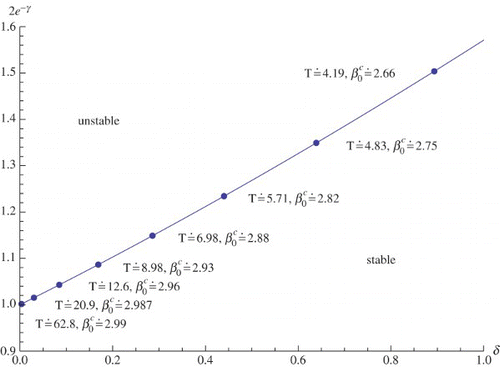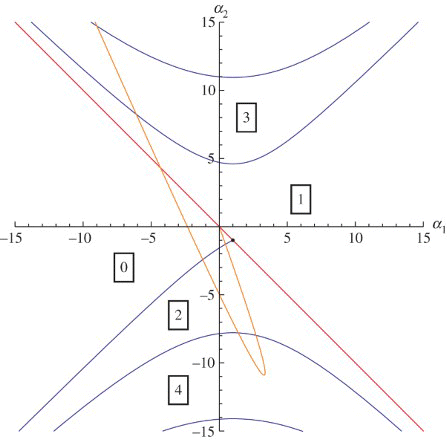Figures & data
Figure 1. Bifurcation diagram in the (α1,α2)-plane showing a transcritical bifurcation curve (red) and Hopf bifurcation curves (blue) for kπ<ω<(k+1) π with k=0, 1, 2. The numbers of eigenvalues in the right half of the complex plane are indicated in the boxes. Each number (box) corresponds to a region bounded by the bifurcation curves.

Figure 2. Critical values of the parameters δ, 2 e−γ, and β0 and the Hopf period T for n=3. The transition from a stable steady state to an unstable steady state happens when we pass from below the curve to above the curve or when β0 increases from below the critical value to above
. For ω=0 we have
.

